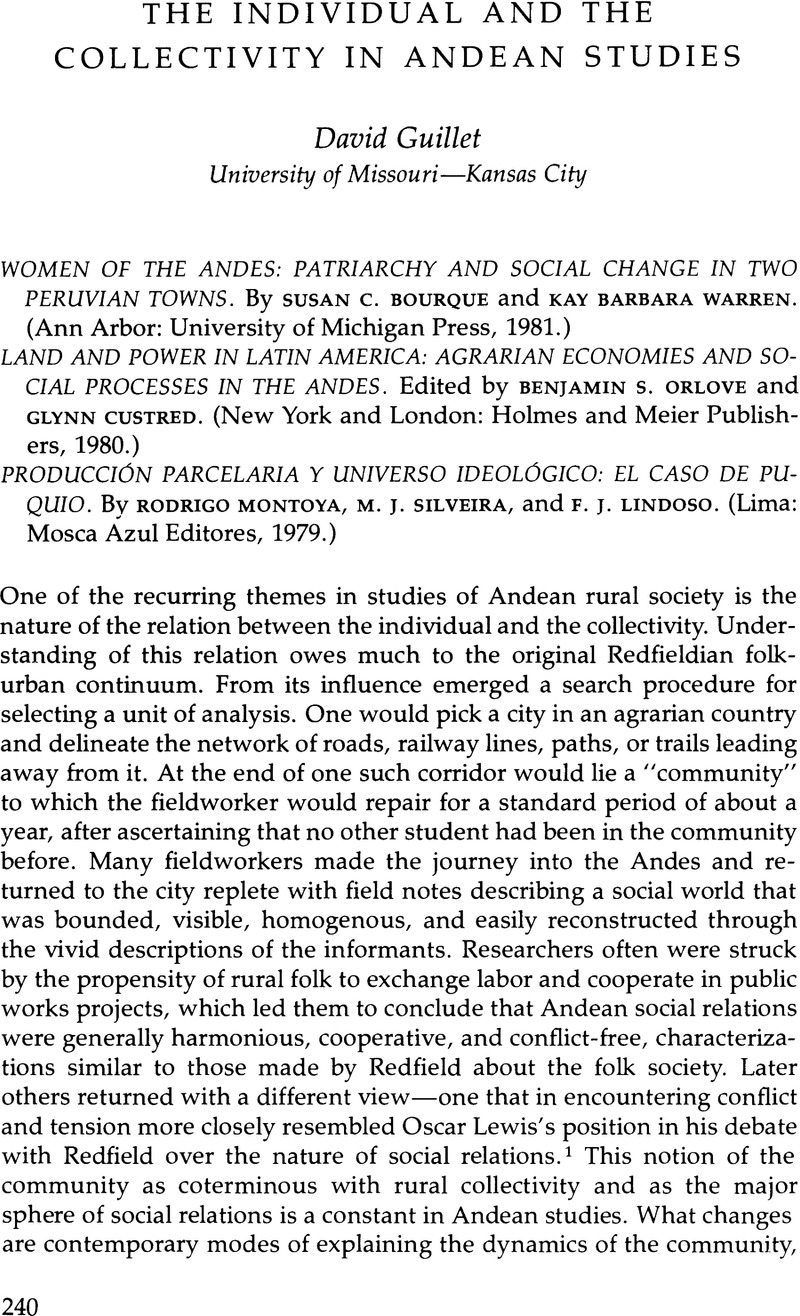No CrossRef data available.
Published online by Cambridge University Press: 24 October 2022

1. For a summary of the debate through the mid-1970s and an attempt to resolve the two conflicting views, see William F. Whyte, “Conflict and Cooperation in Andean Communities,” American Ethnologist 2(1975):373-92.
2. Occasional studies of individual haciendas were made in prior decades, such as Maxime Kuczynski-Godard, “Un latifundio del sur: una contribución al conocimiento del problema social,” América Indígena 6(1946):257-74. However, the major shift in focus in the 1960s toward haciendas resulted from attention given to the Cornell Project at Vicos and the plight of the labor force on haciendas in southern Peru. An especially important signal of the new direction was Mario Vásquez, Hacienda, peonaje, y servidumbre en los Andes peruanos (Lima: Editorial Estudios Andinos, 1961).
3. See Norman Long and Bryan R. Roberts, eds., Peasant Cooperation and Capitalist Expansion in Central Peru (Austin and London: Institute of Latin American Studies, University of Texas Press, 1978), for a collection of studies of Mantaro Valley communities that share a similar perspective.
4. The most successful example of this genre is Fernando Fuenzalida et al., Estructuras tradicionales y economía de indígenas de Huayopampa (Lima: Instituto de Estudios Peruanos, 1968).
5. Recent sophisticated analyses of Andean symbol and belief can be found in Joseph W. Bastien, Mountain of the Condor: Metaphor and Ritual in an Andean Ayllu (New York: West Publishing, 1978); Billie Jean Isbell, To Defend Ourselves: Ecology and Ritual in an Andean Village (Austin: Institute of Latin American Studies, University of Texas Press, 1978); and, Juan M. Ossio, ed., Ideología messiánica del mundo andino (Lima: Edición de Ignacio Prado Pastor, 1973).
6. R. Brooke Thomas, Human Adaptation to a High Andean Energy Flow System, Occasional Papers in Anthropology No. 7. (University Park, Pennsylvania: Department of Anthropology, University of Pennsylvania, 1973).